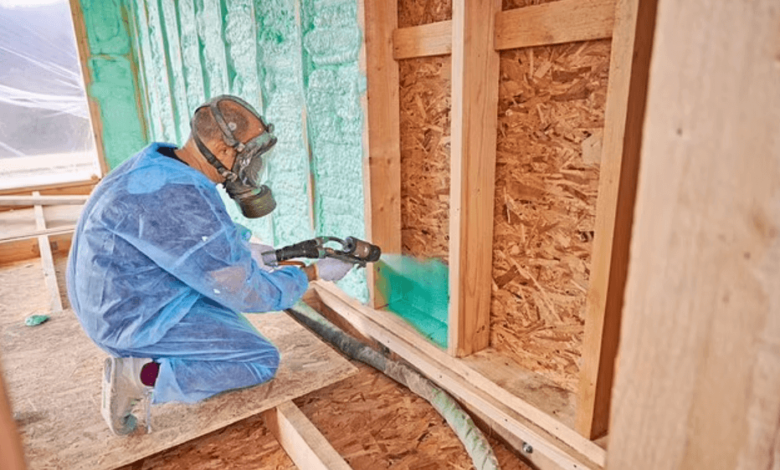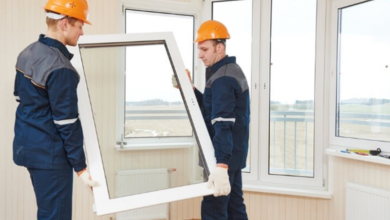The Benefits of Spray Foam Insulation for Energy Efficiency

Spray foam insulation has gained widespread popularity in recent years as an effective solution for improving energy efficiency in homes and commercial buildings. Its unique application process and material properties make it distinct from traditional insulation types like fiberglass and cellulose. Understanding how spray foam works and its advantages can help property owners make informed decisions about insulation upgrades.
Spray foam is a polyurethane-based product that expands rapidly when applied, filling gaps and crevices that other insulation materials may miss. This characteristic contributes to superior air sealing and thermal resistance. Homeowners and contractors in insulation Minneapolis often recommend spray foam for its comprehensive coverage and durability.
How Spray Foam Insulation Works
Unlike batt or loose-fill insulation, spray foam is applied as a liquid that quickly expands and hardens. It adheres to surfaces, creating a seamless barrier against air infiltration. This expansion allows it to fill cracks, joints, and difficult-to-reach cavities within walls, ceilings, and attics.
Spray foam is typically categorized into two types: open-cell and closed-cell. Open-cell spray foam is softer and more flexible, offering excellent air sealing and soundproofing benefits. Closed-cell spray foam is denser, providing a higher R-value per inch and greater resistance to moisture and structural stress.
Due to its strong adhesion and expansion properties, spray foam also adds structural strength to buildings. This makes it a favored choice for both new construction and retrofit projects aiming to maximize energy performance.
See also: Protecting Your Home the Right Way: Wasp Exterminator in Chelmsford
Energy Efficiency Advantages
One of the primary benefits of spray foam insulation is its superior energy efficiency compared to traditional materials. The material’s ability to create an airtight seal prevents drafts and reduces unwanted heat transfer, leading to lower heating and cooling costs.
In many cases, homes insulated with spray foam maintain more consistent indoor temperatures, improving occupant comfort. This airtightness also reduces the workload on HVAC systems, which can extend equipment lifespan and reduce energy consumption.
The high R-value of closed-cell spray foam means fewer inches are needed to achieve the same level of insulation, which can be advantageous in spaces where thickness is a constraint. This efficient use of space makes spray foam a practical solution for modern building designs with tight architectural requirements.
Moisture and Air Barrier Properties
Spray foam insulation acts not only as a thermal insulator but also as an effective moisture and air barrier. Closed-cell spray foam is particularly resistant to water absorption, preventing moisture buildup that can lead to mold growth and structural damage.
By sealing air leaks, spray foam minimizes the intrusion of outdoor allergens and pollutants, improving indoor air quality. This is especially important for households with allergy sufferers or individuals sensitive to airborne contaminants.
The moisture resistance and sealing properties also contribute to the longevity of building materials, as reducing condensation and dampness prevents premature decay and deterioration.
Environmental Impact and Cost Considerations
While spray foam insulation provides significant energy savings, its environmental impact should be considered. The manufacturing process involves chemicals that can have a carbon footprint. However, many manufacturers are now developing formulations with reduced environmental impact.
Investing in spray foam insulation often results in long-term cost savings due to decreased energy bills. Though the initial installation cost is higher than traditional insulation options, many homeowners find that the return on investment justifies the expense.
Choosing a reputable installer like Century Insulation ensures proper application and maximizes the benefits of spray foam insulation.
Installation and Application Areas
Spray foam can be applied to various parts of a building including walls, attics, crawl spaces, and basements. Its versatility allows it to address common problem areas that often cause energy loss.
Installation requires specialized equipment and trained professionals to handle the chemicals safely and achieve optimal coverage. Proper ventilation during application is essential to protect occupants and installers.
Because spray foam adheres to surfaces tightly, it can fill irregular cavities and hard-to-reach areas where other insulation might fail. This makes it particularly effective in older homes with inconsistent framing or gaps.
Conclusion
Spray foam insulation offers numerous benefits for enhancing energy efficiency in residential and commercial properties. Its superior air sealing, high R-value, and moisture resistance make it a valuable choice for maintaining comfortable indoor environments and reducing energy consumption.
While the upfront costs may be higher than traditional insulation materials, the long-term energy savings and building protection make spray foam a worthwhile investment. Proper installation by experienced professionals ensures that the material performs effectively and delivers maximum benefits.





